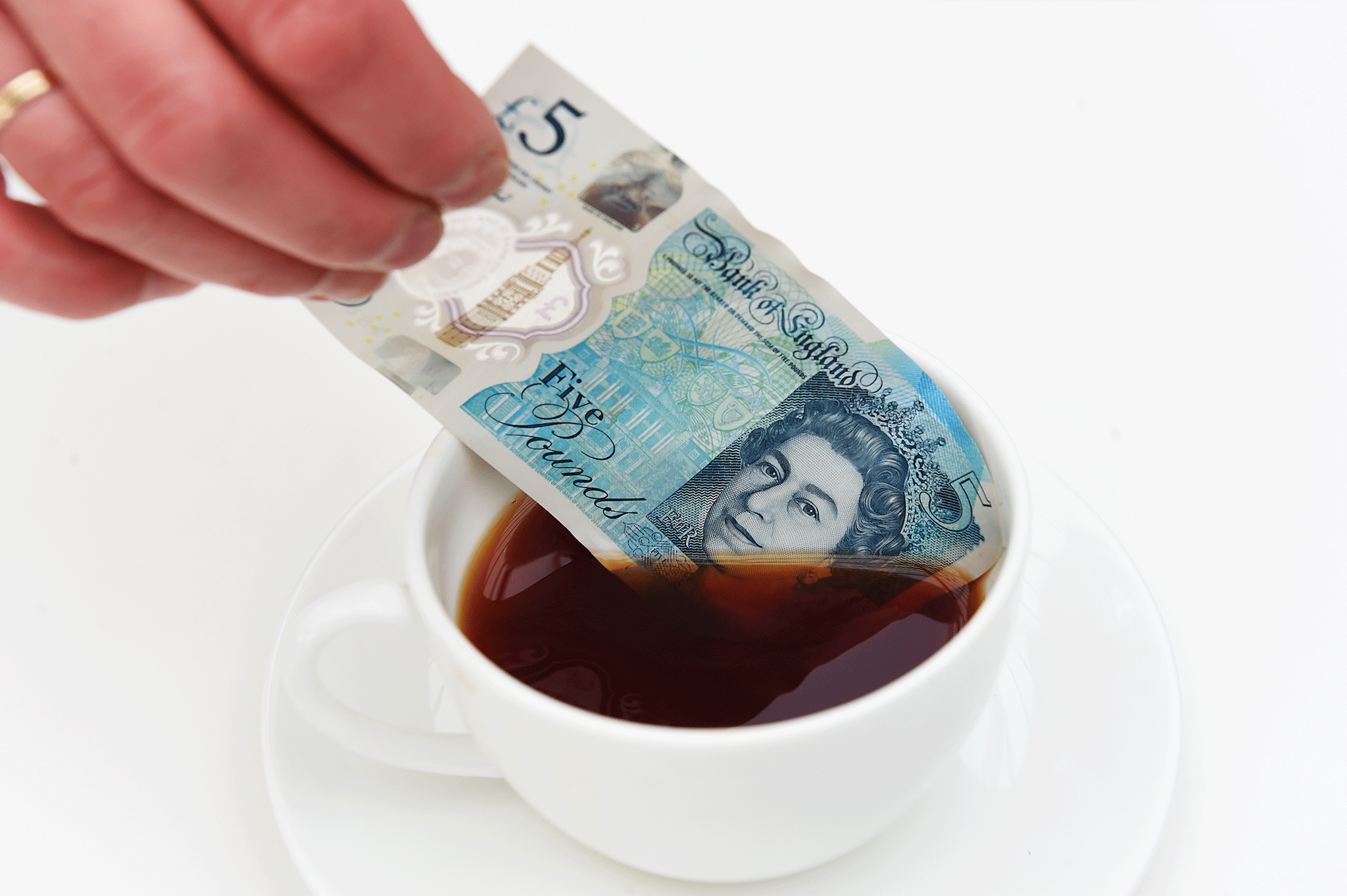Chemistry professor proves the new five pound note is not indestructible
The new polymer banknotes, first issued in September last year featuring Sir Winston Churchill, were described as “considerably more durable”

A chemistry professor has proved the Bank of England’s new five pound note can be destroyed.
The new polymer banknotes, first issued in September last year featuring Sir Winston Churchill, were described as “considerably more durable” by the Bank of England.
A spilled drink should have little effect on the new notes, which can be wiped clean and will even survive a standard laundry cycle with “minimal damage”, according to the Bank.
However, Sir Martyn Poliakoff , professor of chemistry at Nottingham University and famous on Youtube for his Periodic Video series, has demonstrated that the new fiver is not indestructible.
In the video, Sir Martyn, admitted he felt “immediately challenged” when the new note was first issued. Together with his assistant Neil Barnes the professor demonstrated two ways to get the better of the new polymer notes.
First the professor had the idea to freeze it with liquid nitrogen.
“The strands of the polymer would be rigid and you may be able to break it, hitting it with a hammer,” the professor said in the video.
His assistant, Mr Barnes then repeatedly beat the note with a hammer eventually breaking the fiver into pieces.
"It took several attempts. You had to get the orientation just right and hit it just in the right way, and then it broke into two or three pieces," Sir Martyn said.
The professor said he was not entirely satisfied with the result, so he set about testing another note with fuming nitric acid.
After a few minutes in the liquid, the image of the Queen disappeared, followed by other details, ultimately leaving behind a transparent plastic polypropylene sheet.
Sir Martyn said he used his own money for the experiment explaining “you can’t spend university money on things like this.”
British shoppers have less than month to spend the 160 million old fivers which are still in circulation before they lose legal tender status, the Bank of England warned last week.
The 2016 banknote beauty pageant
Show all 6After 5 May, shops will no longer have to accept the old fivers, featuring prison reformer and philanthropist Elizabeth Fry, as payment or in change.
The Bank said more than 50 per cent of the old notes have already been returned to be destroyed, leaving around 160 million in circulation.
Subscribe to Independent Premium to bookmark this article
Want to bookmark your favourite articles and stories to read or reference later? Start your Independent Premium subscription today.

Join our commenting forum
Join thought-provoking conversations, follow other Independent readers and see their replies